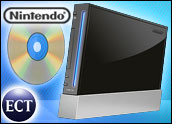
Not to be left out of the furious technology tussle that has Sony and Microsoft gaming over their next-generation consoles, Nintendo touted the deep game support and backward compatibility of its own Revolution console this week.
While Microsoft and Sony have touted improved power and graphics in their Xbox 360 and PlayStation 3 — which have transformed into multimedia machines for music, movies and more Internet connectivity — Nintendo is still focusing on a broader target audience for games and may be content to serve as the secondary playing system in consumer households, analysts said.
“They’re supporting backward compatibility and tapping people’s sense of nostalgia for games,” Jupiter Research senior analyst Jay Horwitz told TechNewsWorld. “Nintendo has a significant, well-established stable of characters and games that are exclusive to it. They’re going after what they see as an opportunity to be the second console in the household and cater to a wider audience. It can be a real opportunity.”
Differentiating by Design
Horwitz praised Nintendo for differentiating its next-gen console by supporting backward compatibility to its older GameCube console and other devices, including the popular GameBoy and new DS handhelds. He also praised the Japanese company for maintaining the price difference between its console and the others.
The analyst added that although it has been “cagey” about the design of the controllers for its new Revolution console, Nintendo is signaling it will stick to the gaming experience, as opposed to the broader efforts of Microsoft’s and Sony’s multimedia console offerings.
“They really are looking to experiment with new ways to interact with games,” Horwitz said of Nintendo. “I think they’re doing the right thing. At their heart, they’re a game company. They really are about game development and creating an interesting game experience. They’re not trying to establish a foothold in the living room like Microsoft, or establishing links beyond the living room as Sony is.”
Keeping Their Place
Horwitz added that while Microsoft and Sony are gunning for dominance of the console battle, Nintendo may be content to simply stay in the game.
“It’s about keeping their seat at the table rather than leading the pack,” he said, adding that the new Revolution does in fact boost performance from previous Nintendo systems and also features wireless interconnections as an innovation.
Horwitz said while all of the console makers must achieve mass market consumption in order to support game development and sales — where the companies recoup their margins in the video game business — the market can likely support all three major consoles.
“It’s not a zero-sum game,” he said.
Most Compatible Console
Parks Associates senior analyst Michael Cai, who attended the E3 Conference in Los Angeles, told TechNewsWorld that Nintendo’s announcement of deep compatibility with older systems and downloadable catalog were most significant.
“This console will be compatible with other previous games with other Nintendo systems,” he said. “That, and the fact that the game catalog will be downloadable are two very interesting things.”
And while he referred to an easier game development process for Revolution, Cai said Nintendo is playing against fierce competitors, who are both pouring resources into promotion of their next-gen systems.
“Even for the next generation, although the processing power is up, in terms of perception and image, [Nintendo] still doesn’t have as strong of a position as Xbox 360 or PS3,” he said. “In terms of game development, it will be demanding. Nintendo will lower the bar to a degree.”





















































